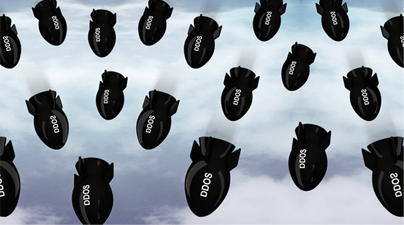
Online banking is convenient: it’s easy to check balances, schedule payments, and transfer funds. It’s also easy for cybercriminals to target online banking sites, separating consumers from their money.
You know about being careful and not clicking on random links or downloading software from unknown sources in order to avoid being infected by banking Trojans. You scrutinize account activity and don’t give out bank information to prevent account fraud and takeover. However, the latest attacks knock the banking Website offline so that you can’t even login to your account.
Cyberattackers have targeted some of the largest banks in the U.S. and worldwide with large distributed denial of service (DDoS) attacks over the past few months. In these DDoS attacks, the Website is overwhelmed trying to process a large number of requests all at once. At first, the site gets sluggish, until it eventually crashes and goes offline.
These banks have been hit by waves of DDoS attacks since last fall. The DDoS attacks lasts about three days, during which time banking customers have a hard time getting anything done on the online banking site, or can’t even log in at all.
Just because you can’t log in to you online banking account doesn’t mean your money has disappeared. It just means that you may need to go to physical branch, visit an ATM, or just wait out the attack.
All the financial institutions claimed customer data was not impacted and no fraudulent activity had been detected. As soon as the attacks ended, the sites were back online without any further issues. DDoS, while disruptive, affects Web servers, which are usually well-separated from the systems that handle customer account data and actual transactions.
Even so, these attacks can be a diversion, a way to distract the IT team while another group sneaks in and steals money. These DDoS attacks have in fact “led to or been associated with fraud and customer account takeover,” warned Gartner’s Avivah Litan recently.
A large U.S. bank recently admitted in documents filed with regulators that the attacks “resulted in certain limited losses in some instances,” but did not elaborate. Users should check their accounts and statements for suspicious activity that may have occurred during the DDoS attack. Other basic security hygiene applies, such as selecting, and regularly changing, strong passwords for online bank accounts and running up-to-date antivirus and firewall products, not clicking on links, or opening attachments. It’s critical that all installed software, including Web browsers and the operating system, be updated regularly.
There is not much you can do during a DDoS attack on your financial institution, but you should still follow basic security precautions, check your statements after the attack, and just be vigilant.